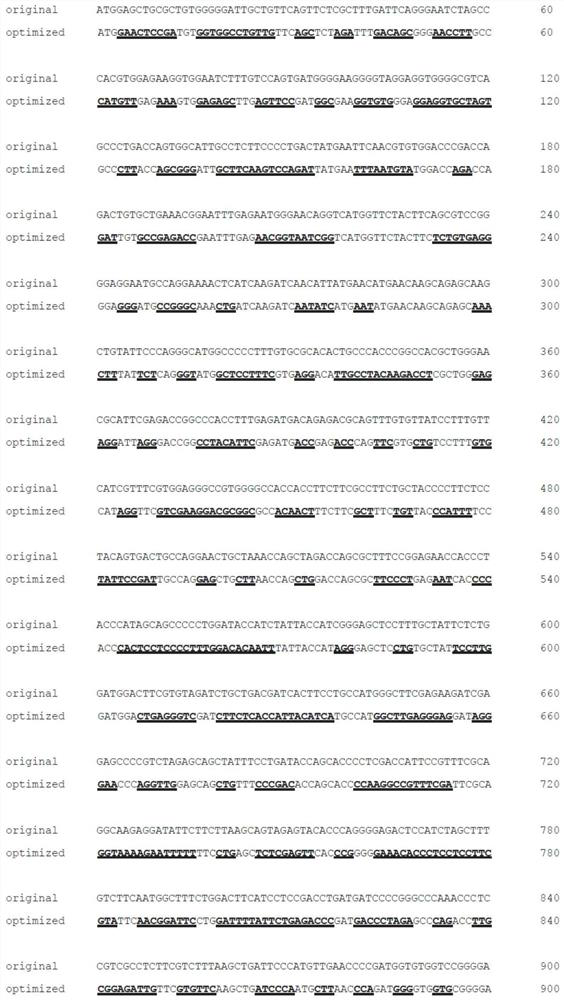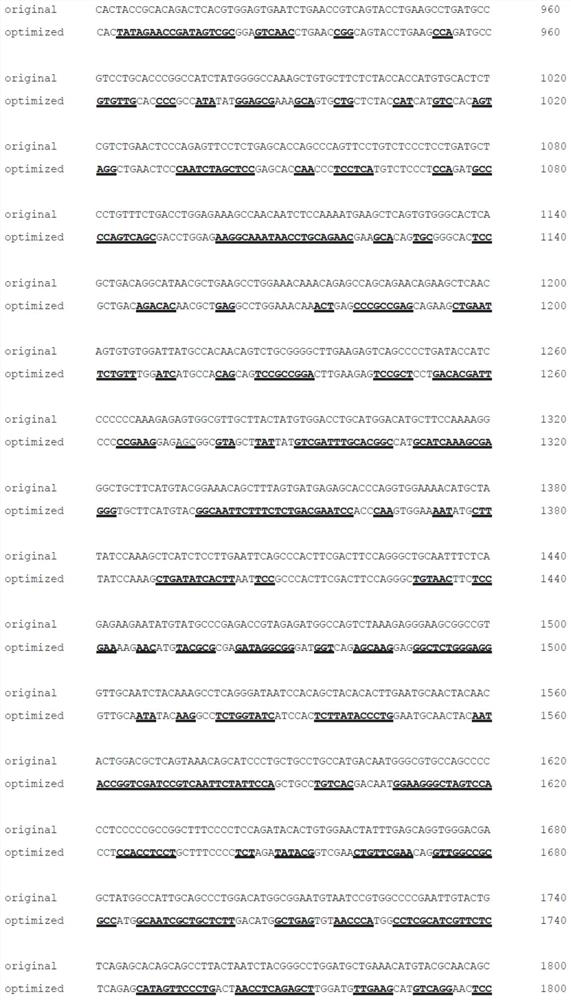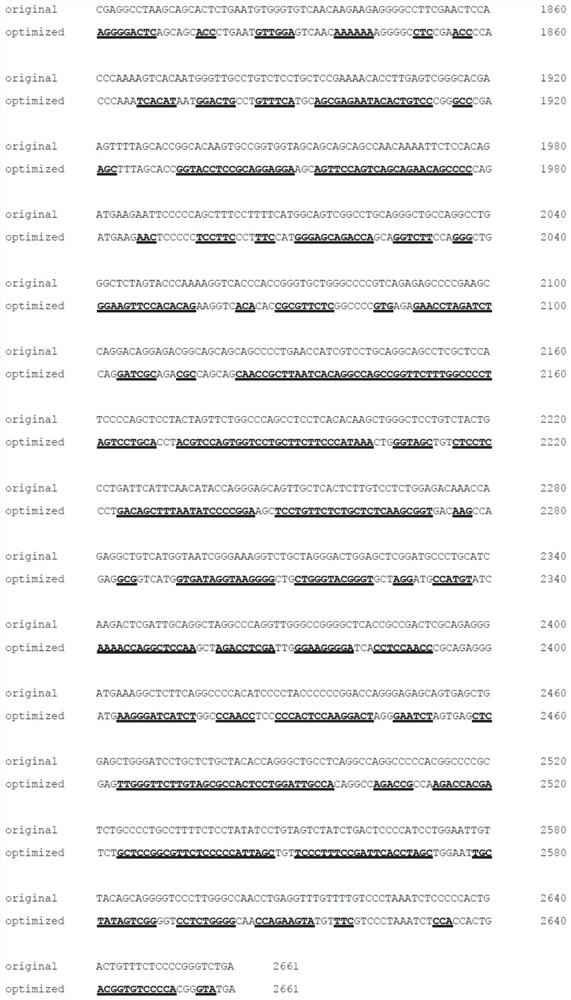AGBL5 nucleotide sequence for encoding cytoplasm carboxypeptidase protein 5 and application of AGBL5 nucleotide sequence
A nucleotide sequence and carboxypeptidase technology, applied in the direction of peptide/protein components, peptidase, application, etc., can solve the problem of transducing retinal tissue cells, so as to prevent or treat retinitis pigmentosa and improve retinal pathological symptoms Effects of improving and restoring normal function
- Summary
- Abstract
- Description
- Claims
- Application Information
AI Technical Summary
Problems solved by technology
Method used
Image
Examples
Embodiment 1
[0042] Example 1: Codon-optimized AGBL5 vector construction and expression verification
[0043] (1) Plasmid vector construction
[0044] 1. The AAV-CMV plasmid backbone, coAGBL5 fragment and wtAGBL5 fragment were digested with HindIII and XhoI at the same time, and then the digested fragments were ligated to the backbone respectively.
[0045] 2. The ligation product was transformed into E. coli, and a single colony was picked for enzyme digestion verification and sequencing verification.
[0046] (2) Cell transfection
[0047] 1. One day before transfection, cells were trypsinized and counted, and the cells were plated so that the density on the day of transfection was 90%.
[0048] 2. For each well of cells, use 50 μl of serum-free DMEM medium to dilute 0.8 μg-1.0 μg of DNA.
[0049] 3. For each well of cells, use 50 μl of DMEM medium to dilute 1 μl-3 μl of LIPOFECTAMINE 2000 reagent. After dilution of LIPOFECTAMINE 2000, mix with the diluted DNA within 5 minutes.
[0...
Embodiment 2
[0072] Example 2: AAV-mediated AGBL5 cell expression and functional verification in vitro
[0073] (1) Cell transfection
[0074] 1. One day before transfection, cells were trypsinized and counted, and the cells were plated so that the density on the day of transfection was 90%.
[0075] 2. For each well of cells, use 50 μl of serum-free DMEM medium to dilute 0.8 μg-1.0 μg of DNA.
[0076] 3. For each well of cells, use 50 μl of DMEM medium to dilute 1 μl-3 μl of LIPOFECTAMINE 2000 reagent. After dilution of LIPOFECTAMINE 2000, mix with the diluted DNA within 5 minutes.
[0077] 4. Mix diluted DNA and diluted LIPOFECTAMINE 2000 and incubate at room temperature for 20 minutes.
[0078] 5. Add the complex directly to each well, shake the culture plate, and mix gently.
[0079] 6. At 37°C, 5% CO 2 Keep warm for 24-48 hours.
[0080] 7. Cells were lysed 24-72 hours after adding the complex to the cells.
[0081] (2) Detection of tubulin glutamate
[0082] 1. Centrifuge the...
Embodiment 3
[0102] Example 3: AAV2 / 2.7M8-coAGBL5 gene therapy drugs improve the abnormal glutamate of retinal tubulin in mice
[0103] (1) Virus packaging, virus drug injection into mice
[0104] 1. HEK293T cells with a degree of polymerization above 90% are transferred in a ratio of 1:3.
[0105] 2. About 1-2 hours before transfection, replace with serum-free medium, and use transfection reagent to transfer the target gene plasmid and helper plasmid (including AAV2.7M8 serotype elements) into HEK293T.
[0106] 3. After 24 hours of plasmid transformation, replace with new serum-free medium
[0107] 4. The virus was harvested after 72 hours of transfection. With the culture medium, blow down the cells and centrifuge; then harvest the culture supernatant and cell pellet separately. The virus in the medium supernatant was precipitated with PEG8000, and the virus pellet was collected after precipitation overnight.
[0108] 5. The virus mixture was purified by iodixanol density gradient ce...
PUM
 Login to View More
Login to View More Abstract
Description
Claims
Application Information
 Login to View More
Login to View More - R&D
- Intellectual Property
- Life Sciences
- Materials
- Tech Scout
- Unparalleled Data Quality
- Higher Quality Content
- 60% Fewer Hallucinations
Browse by: Latest US Patents, China's latest patents, Technical Efficacy Thesaurus, Application Domain, Technology Topic, Popular Technical Reports.
© 2025 PatSnap. All rights reserved.Legal|Privacy policy|Modern Slavery Act Transparency Statement|Sitemap|About US| Contact US: help@patsnap.com



